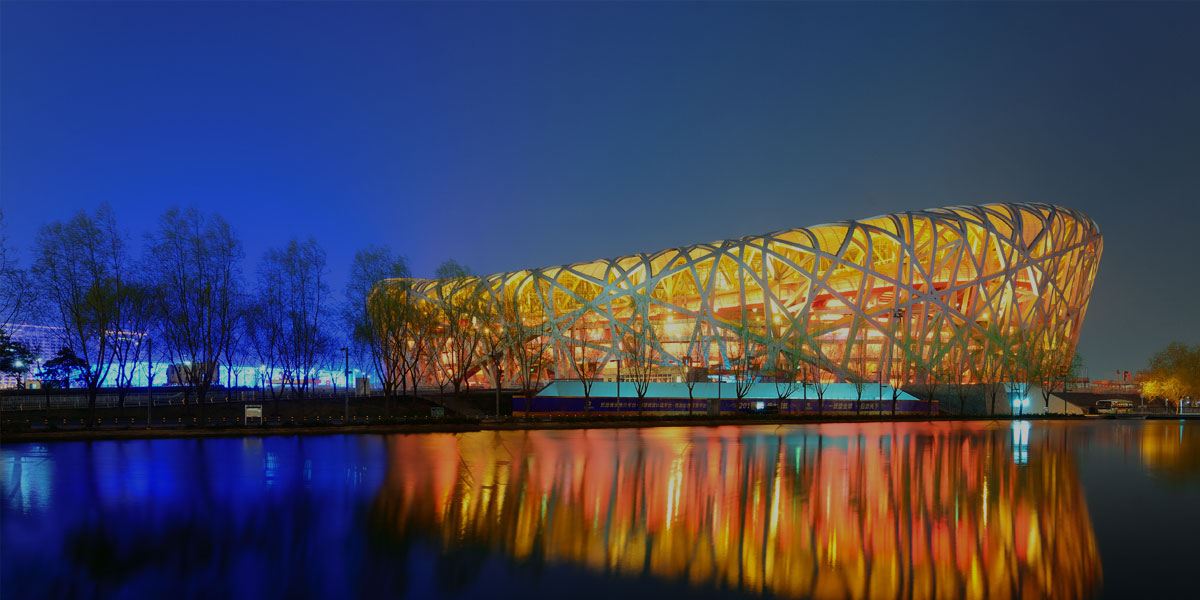National Stadium (Bird's Nest), Bejing City, China
Before pencil had been put to paper on initial concepts for the Beijing National Stadium, modern stadium design had slunk into a world of stultifying sameness. Commercial briefs directed only at maximizing capacity and revenue resulted in a slew of faceless bowls and domes pockmarking cities throughout the world. Beijing’s National Stadium, now colloquially known as the “Bird’s Nest”, stands as staggering riposte to this conformity.
The stadium was a joint venture among architects Jacques Herzog and Pierre de Meuron of Herzog & de Meuron, project architect Stefan Marbach, artist Ai Weiwei, and was led by chief architect Li Xinggang. The building marries form and function in such a seamless manner that it is not incorrect to consider it both an engineering wonder and a towering work of art.
Its seemingly random lattice of overlaid steel work provides not only the structural strength to support the building, but presents a stunning façade which both demands and rewards closer inspection. It is the antithesis of the myriad sterile modern amphitheatres and nearly ten years after the finale of the Olympic games it was created to house, the Bird’s Nest remains a monument to magnificent ordered chaos.

Furthermore, the building’s graceful stature belies the ingenuity of its construction, which included the invention and fabrication of an entirely new type of steel. Indeed, its 42,000 tons of steel make it the largest steel structure in the world. Notwithstanding this size, the building never appears bulky or unwieldy. Instead, its curved walls rise into an elegant skyward sweep.
The building is a testament to the vision and dedication of its designers, architects and engineers. It is a result of extraordinary collaborative effort. At Tomkins, we aim to support those with that vision to try different things, to push for the out of the ordinary and to strive for greatness. Let us support you in building a monument to your success.